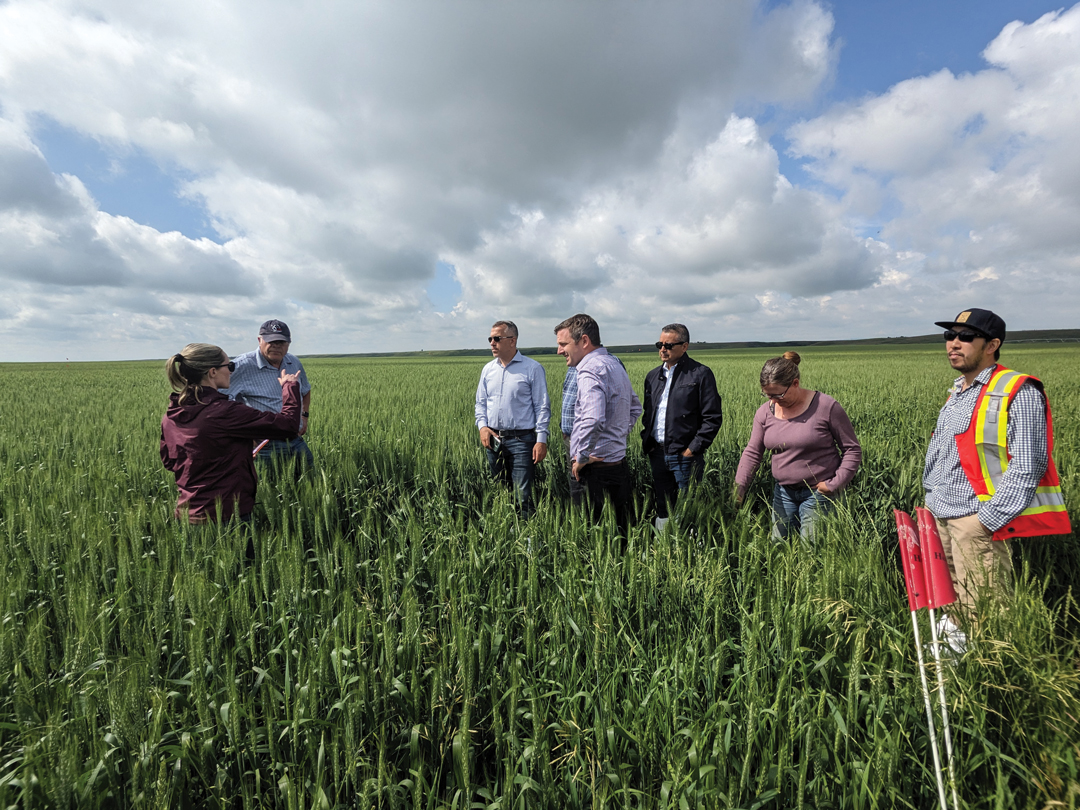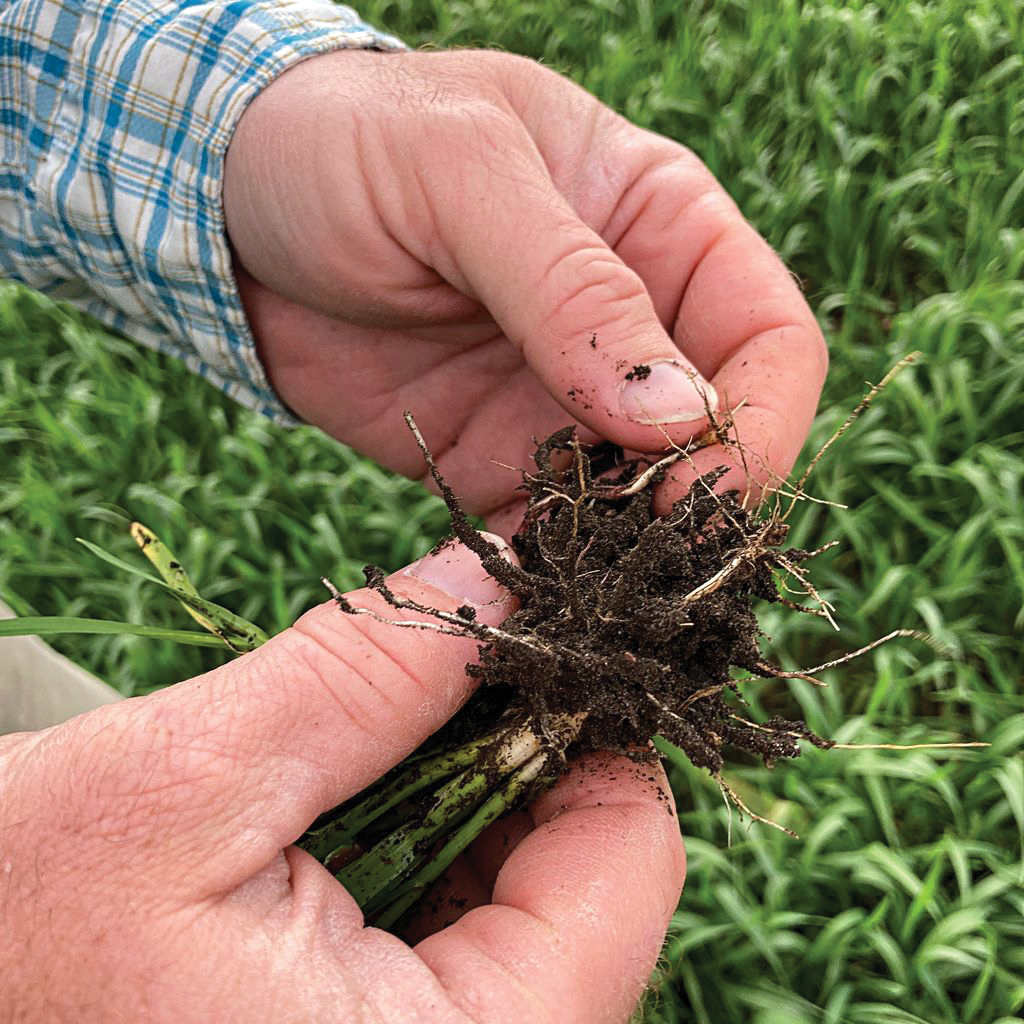ON-FARM RESEARCH CONTINUES
BY IAN DOIG • PHOTO COURTESY OF ALBERTA BEEF PRODUCERS
Every year, Susan Heather (above, second from right), a professional agronomist, and her husband Mike Messerli devise their own on-farm research projects. Situated between Nanton and Vulcan, they grow wheat, barley, canola, peas and corn. When the Alberta AgriSystems Living Lab (AALL) project called for farmers to participate in its field-scale study of multiple best management practices last year, Heather found her latest project aligned perfectly.
One of several regional chapters of Agriculture and Agri-Food Canada’s 10-year, $185-million Agricultural Climate Solutions — Living Labs Program, AALL conducted its first season in 2023. Its emphasis on real-world results unites farmers and scientists to study practices and technologies that reduce greenhouse gas emissions, sequester carbon and benefit the economic bottom line of farmers.
For their project, Heather and Messerli grew an intercrop of silage barley under-seeded with Italian ryegrass. Once the barley was taken off, the ryegrass was treated as a second crop on which they grazed cattle. They hope this will boost soil health and organic matter content as well as prevent erosion and trap winter snow. AALL scientists studied the project’s nitrous oxide emissions and conducted an economic analysis.
Working with the scientists allowed the couple to conduct much more comprehensive field work and analysis of the results than normal. Heather also appreciated the lead role they were given. “They helped us with some checkpoints, but as far as setting it up, it was our project.” While the results will assist with agronomics on her farm, Heather is pleased the data will be shared with other farmers. They repeated the trial in 2024 and substituted barley for wheat.
Over its first two years, AALL has studied a long list of practices that include adaptive multi-pasture grazing, cover cropping, fertilizer use optimization, cover cropping, precision farming techniques, soil improvement via amendments and wetland restoration.
The wide range of practices being studied necessitates a variety of data gathering methods, but aggregate stability, total organic carbon and carbon mineralization are three soil health indicators studied across most AALL projects.
“A lot of these practices have been shown to have benefits under tightly controlled research conditions,” said Karin Schmid, Alberta Beef Producers’ research and production manager and AALL project lead. “The Living Lab is an opportunity to take these out of the research setting and see what we can learn about them on working farms.” Though the data produced on-farm is typically “a lot noisier,” there is much to learn from it. As of spring 2024, thousands of first year samples were being analyzed.
Schmid acknowledged that while participants would like to see this analysis completed promptly, it’s a slow process. In the meantime, researchers discussed their preliminary findings with the
farmers. Schmid noted feedback sessions have helped AALL further fine tune the project and improve learning opportunities for participants. “We’re constantly learning and adjusting, which is sort of the point,” she said. These meetings with farmers generated questions about BMPs and related topics. This led AALL to present a soils webinar and followup coffee chat attended by participants.
This certainly describes Heather, who found the meetings to be valuable for networking with fellow farmers. “It’s really nice to hear what’s happening on other farms, what their concerns are and why they chose their projects. It just gives you a broader idea of how we can change things for the better.”
For more information, go to agrisystemsll.ca.







Comments